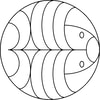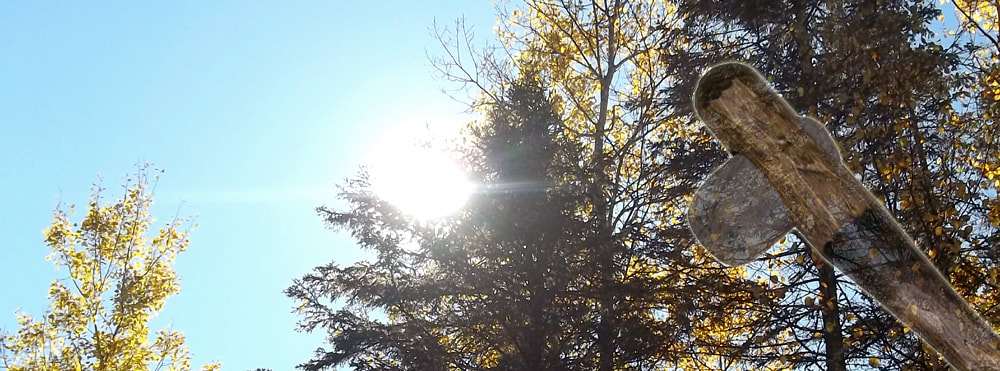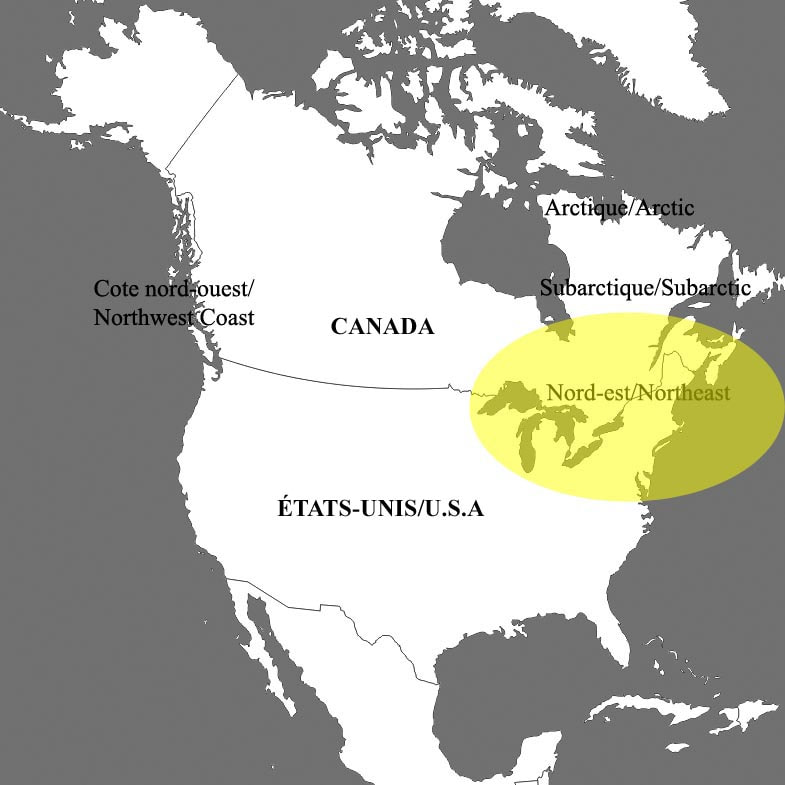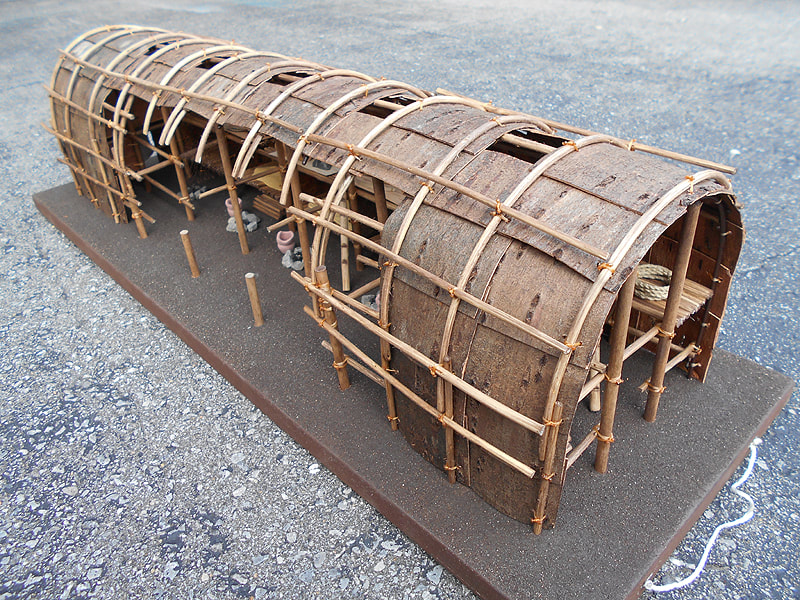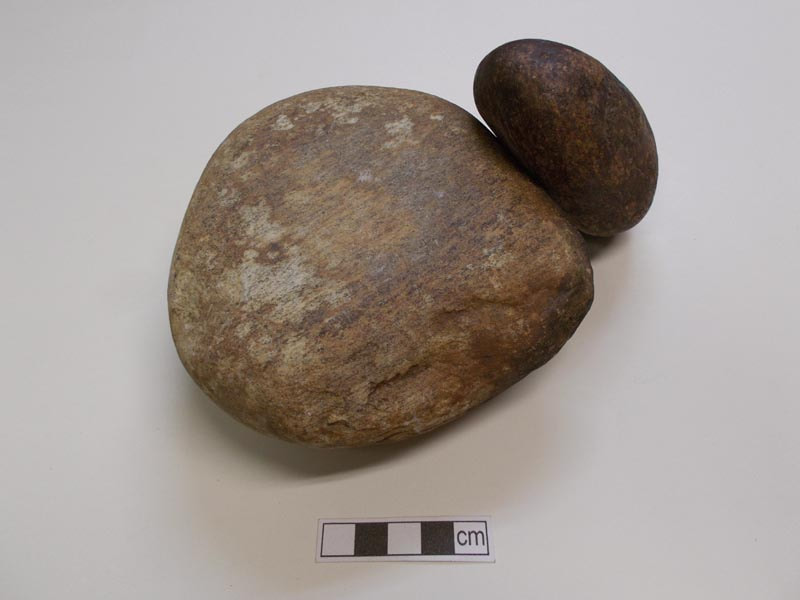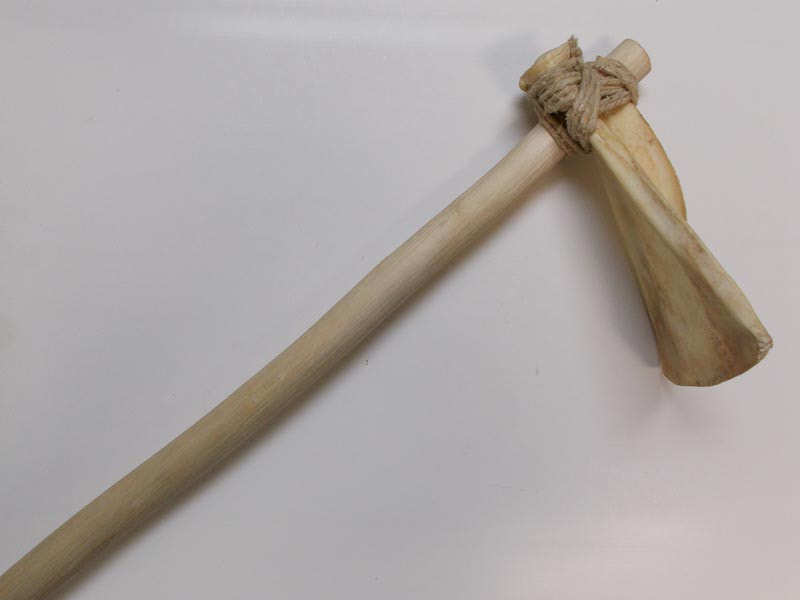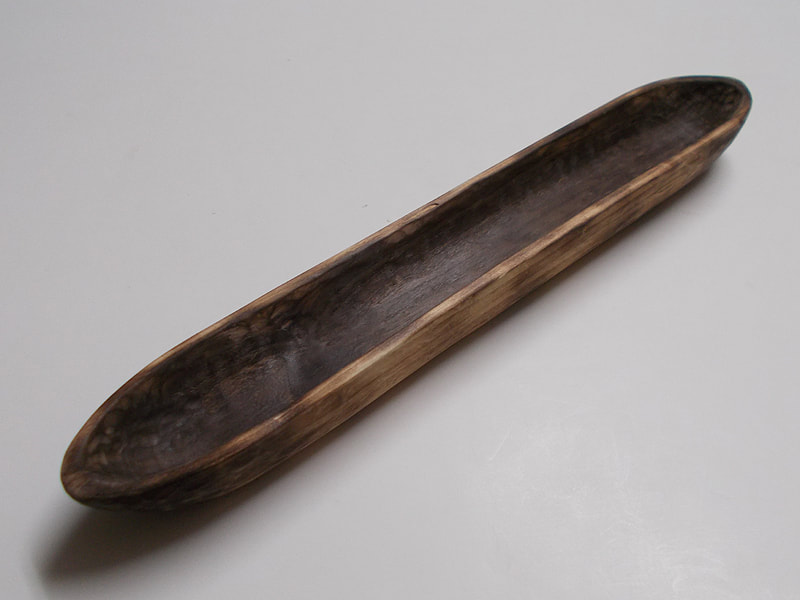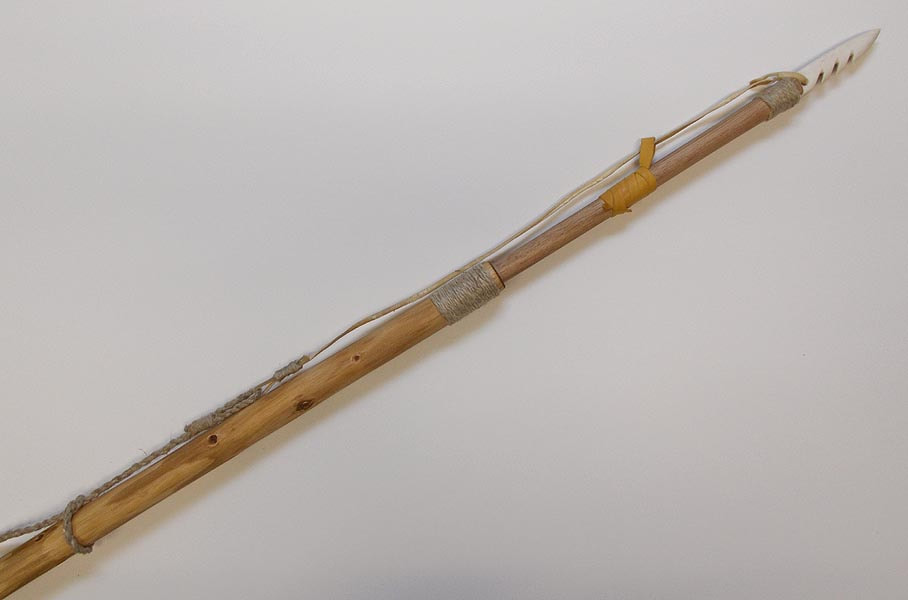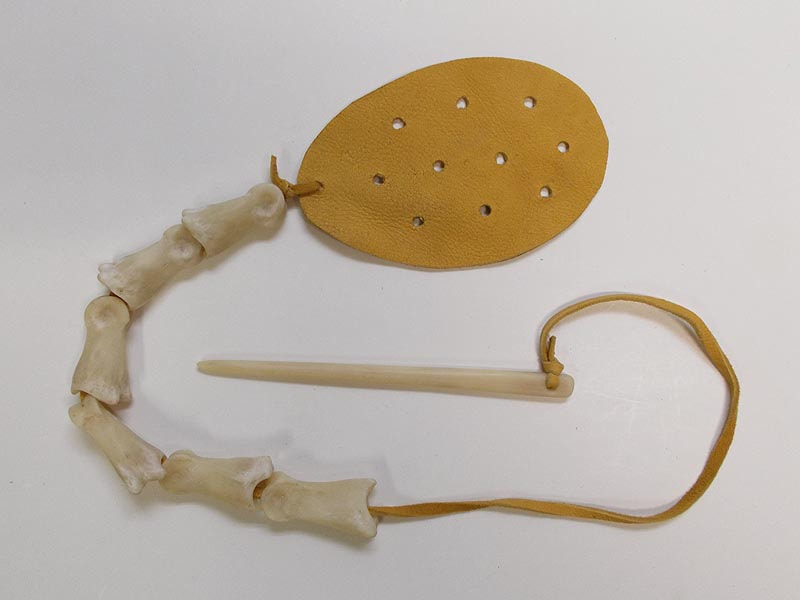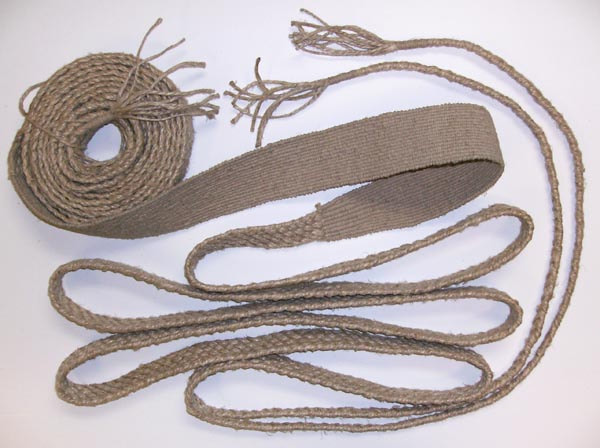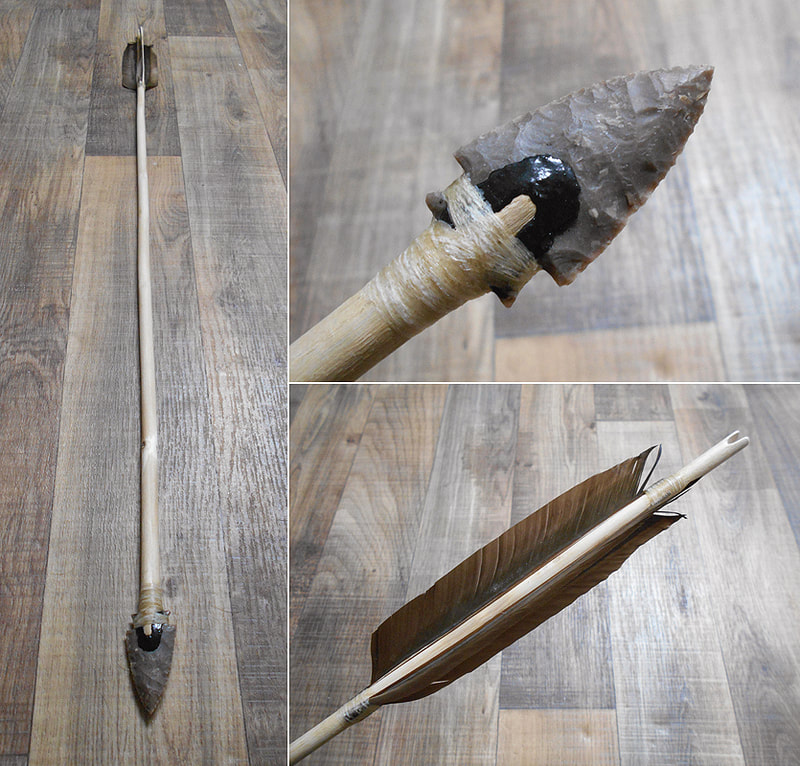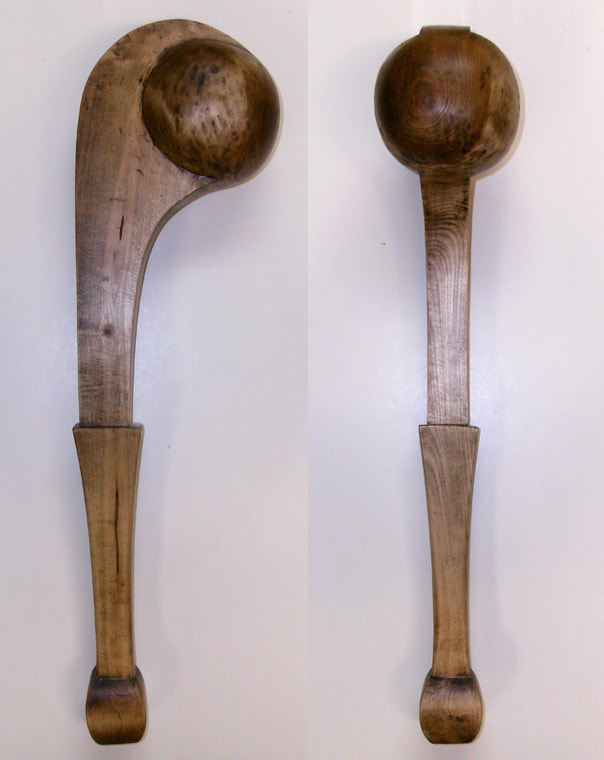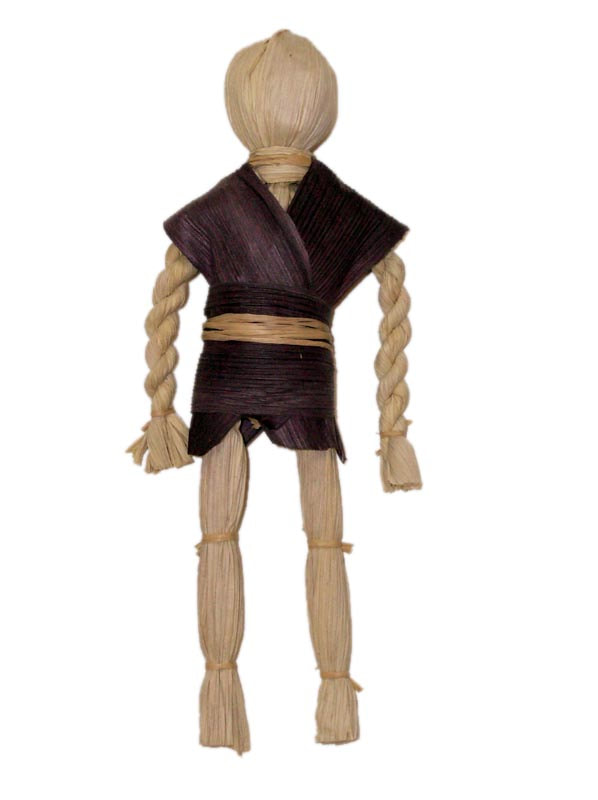Northeast |
|
The Northeast region includes many nations from Quebec to Virginia such as the Iroquoians. These semi-sedentary populations lived in fortified villages where hundreds of inhabitants living in longhouses were divided into clans. Each house was home to a clan managed by women of the same maternal lineage. The grandmothers of the village formed a community council while a male leader elected by this council managed political affairs. In spite of this complexity, life was democratic and wealth shared equally. Most of subsistance came from the horticulture of corn, squash and beans that allowed food reserves for the winter while hunting and fishing were complementary. The importance of territory for subsistance contributed to the warlike behaviour of these people who nevertheless maintained many diplomatic and commercial relations.
|
|
Longhouse model
Materials: wood, bark and others Size: 2 feet x 4 inches The house was covered with bark shingles. The only openings were doors located at each end and smoke holes on top of the roof. The inside was divided in several family units, each composed of a central hearth and two-level benches. The bottom benches were used for daily activities while the top ones were for storage. Two families shared the same hearth by living in front of one another. |
|
Grinding stone
Material: stone Size: 6 inches Corn is a cereal domesticated in Mexico that was adopted by Iroquoians around a 1,000 years ago. This grinding stone composed of a ground stone and a hand stone was used to grind grain into flour. |
Tobacco pipe
Material: baked clay Size: 6 inches Iroquoian people were horticulturalists who cultivated corn, squash, beans, sunflowers as well as tobacco. Tobacco was a sacred plant that was burnt for offerings or smoked in rituals with ceramic pipes. |
|
Hoe
Materials: wood, bone, plant fibre Size: 3 feet Corn brought important changes in Iroquoian society. Women were in charge of horticulture and crafting various objects such as pottery and ploughing instruments such as hoes to maintain the fields. |
Dugout canoe
Material: wood Size: 1 foot (model) Dugout canoes were used in many regions for local navigation. A tree was cut and left to dry to be later carved with fire and stone tools until the log was hollow. |
|
Harpoon
Materials: wood, bone, raw hide, plant fibre Size: point 4 inches Used for seasonal seal hunting or sturgeon fishing expeditions. This detachable point carved in moose bone was attached to a line to retrieve the animal if the hit was fatal or to follow it for the kill. |
Pin and ring game
Materials: deer phalanges and leather Size (stick): 6 inches were a much appreciated game on long winter nights and also contributed to social life and the development of the dexterity required for the subsistence activities of a nomadic lifestyle. The objective of this dexterity game was to catch the pieces. |
|
Tumpline
Material: plant fibre Size: 25 feet These finger woven tumplines in plant fibres measuring up to 30 feet were used to carry bundles and game but also to portage canoes and pull toboggans. They became quite important during the fur trade. |
Moccasins
Materials: deer leather, plant fibre Size: 1 foot The moccasin is a leather shoe with many regional variations. Those of the Northeast had a soft sole that allowed moving silently in the forest. Most moccasins were decorated with embroideries. |
|
Arrow
Materials: wood, chert, resin, sinew Size (point): 1 ½ inch Arrows were fitted with points of bone, antler or chert. Chert was a very sharp material worked by percussion. It was sometimes traded over hundreds of kilometers. |
War club
Material: wood Size: 20 inches The ball headed war club was common from the 17th to the 19th century. More than a simple weapon, it also carried symbols of supernatural empowerment and displayed the exploits of it’s owner. |
|
Doll
Material: corn husks Size: 7 inches Corn husks are a flexible and strong material that was used for basketry and various woven objects. Traditionally, such dolls are faceless because they represent the character of a legend that lost its face as punishment for its vanity. |
Necklace
Materials: ceramic, stone, bone, leather Size (length): 2 feet Iroquoians not only made ceramic pots and pipes but also game tokens and beads. Such beads were likely assembled as necklaces in combination with other kinds of beads. |
